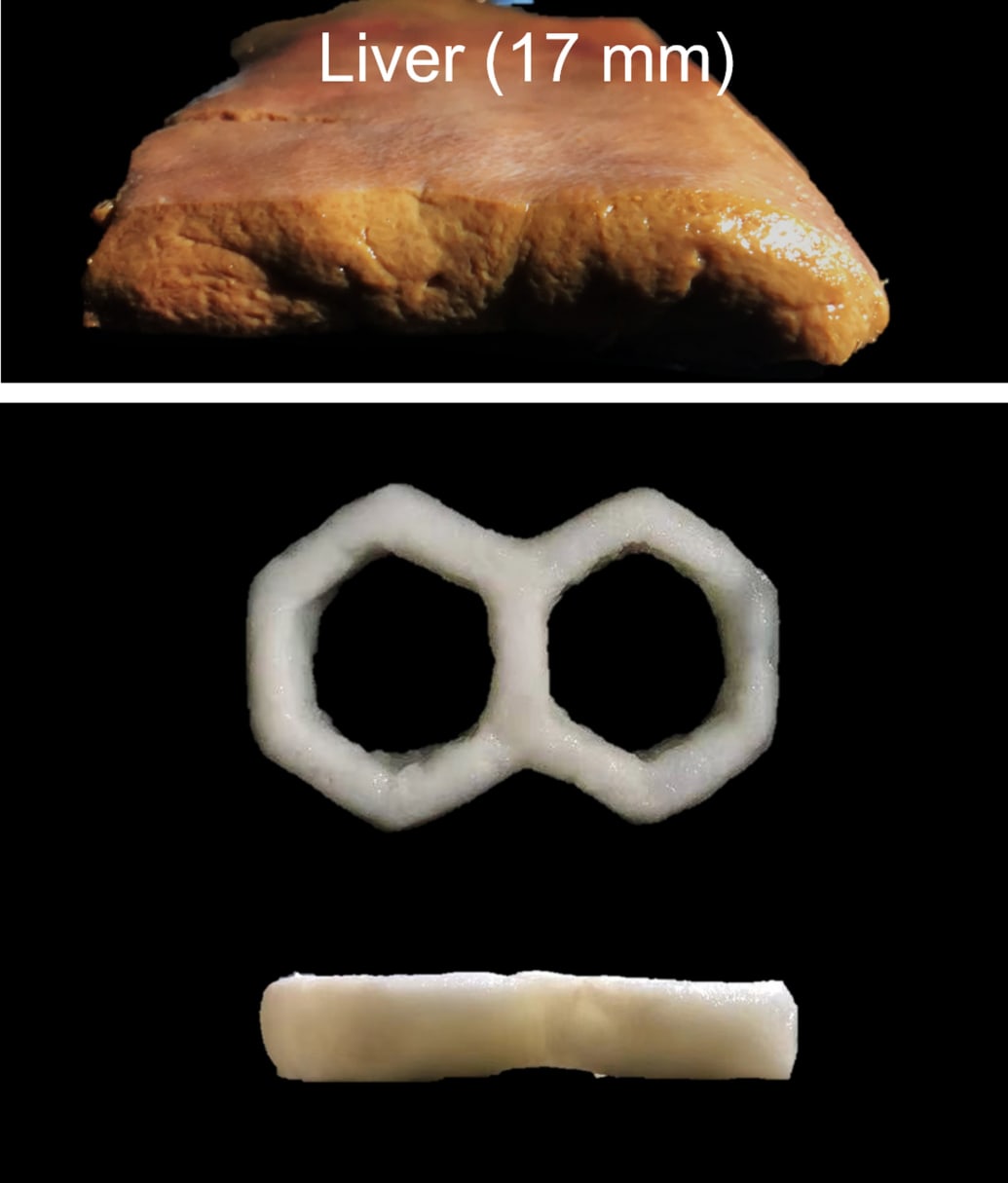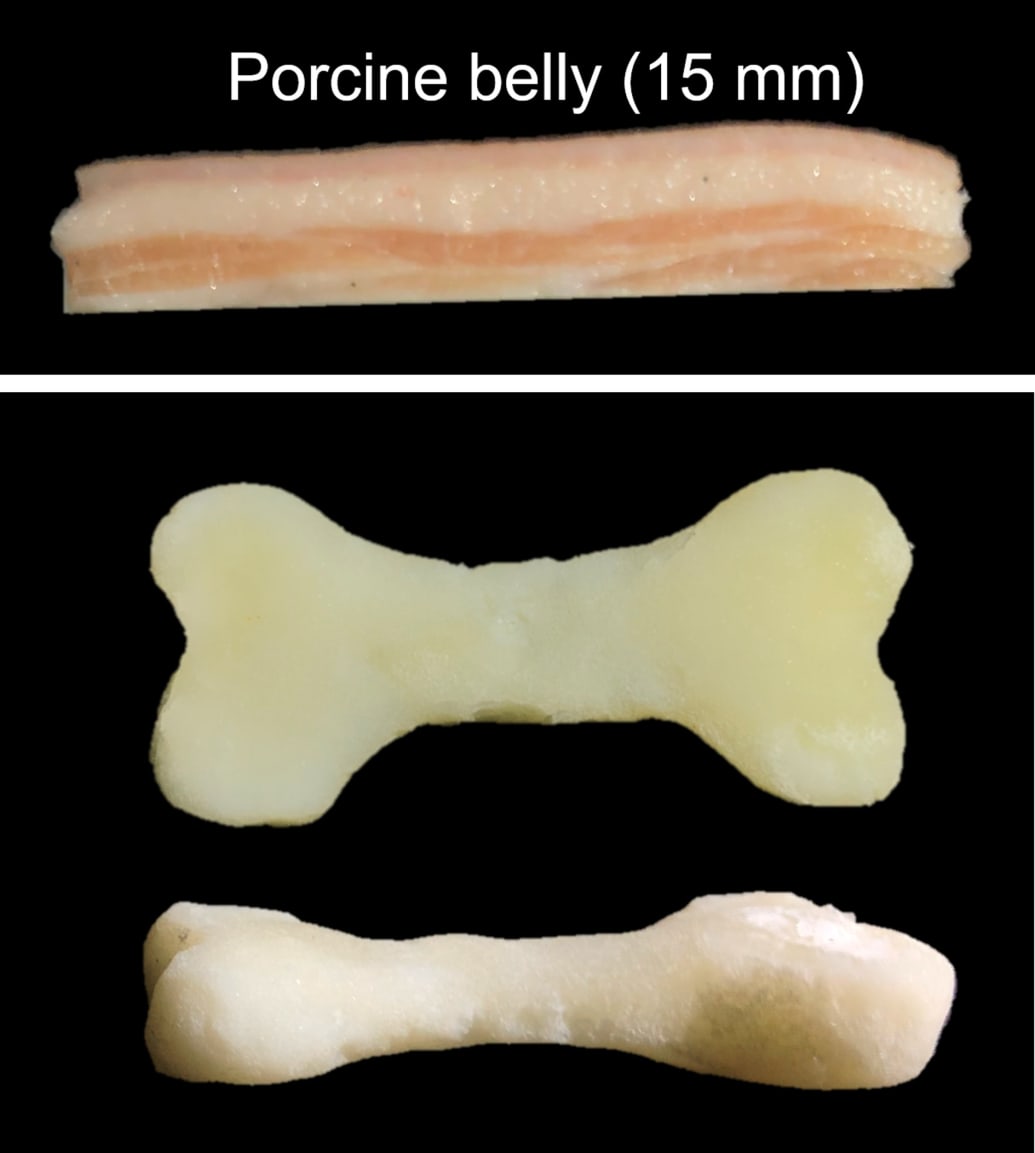3D printing technology has made great strides in recent years – and one of its most promising applications is in medicine. Not only have we seen it used to create artificial bones and tendons, but it’s even capable of creating tactile skin (which is a lot less scary than it sounds).
Now a team of scientists from several universities have gone one step further and developed a 3D printer that is built into the human body. That’s the idea behind a new study published Thursday in the journal Science that looks at a new method that allows researchers to use ultrasonic waves to “print” structures through layers of biomaterials such as skin, muscle and bone.
The technique is known as Deep-Penetrating Acoustic Volumetric Printing (DAVP) and relies on a specially developed substance called “Sono-Ink” to create various structures in the human body.
“DAVP works by directing focused ultrasound waves at a liquid medium that contains sonic inks,” Junjie Yao, a biomedical engineer at Duke University and co-author of the paper, told The Daily Beast. “These inks are formulated to respond to ultrasound and solidify into specific patterns as the ultrasound wave passes through them.”
Figure shows minimally invasive closure of the left atrial appendage by releasing and solidifying sonic inks throughout the entire volume of the atrial appendage.
Xiao Kuang
Most 3D printing techniques you are probably familiar with rely on light-based approaches. As the device creates layers of plastic in the shape of the object to be printed, the object is exposed to UV light to solidify and harden it.
This is great if you’re making things like building materials or even robots. However, it’s less than ideal when you’re trying to do things inside the human body. However, there is great potential for internal 3D printers to repair broken bones and internal wounds, for example.
“For example, it could be used to print biocompatible structures directly in the body, such as scaffolds for tissue regeneration or systems for sustained drug delivery,” explained Yao. “This method could significantly improve the treatment of various medical conditions by enabling precise interventions without the need for invasive surgery, thereby shortening patient recovery time and improving outcomes.”
A simple 2D honeycomb was printed with a PEGDA-based sonot ink on a 2.05 MHz FUS through a 17 mm thick pig liver.
Qiangzhou Rong
In this procedure, a tiny catheter is inserted into the body to deliver the sonot ink. As the Sono-Ink is injected, an ultrasound device on the outside transforms the material into the shape needed to repair bone, patch torn tissue, or even inject life-saving medication.
In experiments, the technique was able to 3D print complex shapes such as letters and spirals through layers of biomaterial such as pig heart, belly fat and kidney. It has also been shown to be able to effectively deliver chemotherapy to a pig’s liver.
“It provides greater precision and control, allowing the creation of complicated structures at depths that were previously unreachable,” Yao said.
A 2D vascular network (82 mm × 68 mm × 1 mm) was printed on a 3.41 MHz FUS using a PEGDA-based sonot ink.
Qiangzhou Rong
However, the technique has not yet been used on human patients. More research is needed before it can advance to human trials and potentially be rolled out in hospitals and medical facilities around the world.
The team behind DAVP hopes to refine and optimize the printing technology while “exploring new materials for sono-inks to expand the capabilities and applications of volume acoustic printing,” Yao explained. Eventually, they plan to collaborate with clinical researchers to see how the method works in actual medical settings.
Yao added: “We are excited about the potential impact of this work and look forward to seeing its real-world applications in the near future.”
A 3D bone model was printed using a PEGDA-based sonot ink on a 2.05 MHz FUS through 15 thick pork belly tissue.



